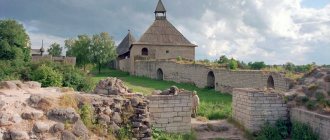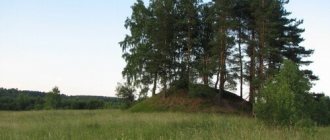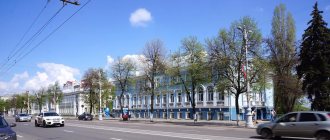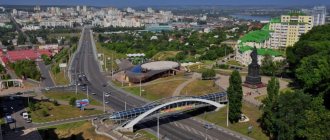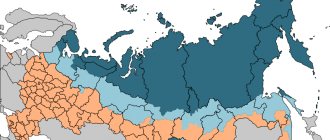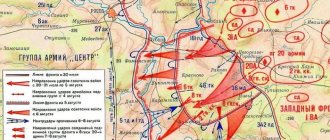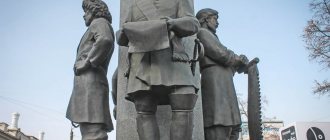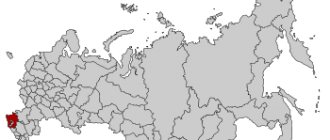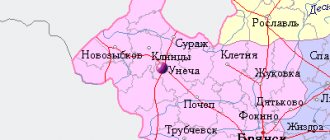Holiday calendar, signs, dates and events for every day of the year - folk calendar, Orthodox calendar, church calendar, eastern calendar, astrological calendar, lunar calendar, industrial calendar, as well as state and professional holidays, including significant World and International holidays and public holidays , folk holidays and omens, and other equally interesting and unusual holidays, dates and events of the year, zodiac signs, dream books and much more.
Calendar for 2022
| January | ||||||
| Mon | W | Wed | Thu | Fri | Sat | Sun |
| February | ||||||
| Mon | W | Wed | Thu | Fri | Sat | Sun |
| March | ||||||
| Mon | W | Wed | Thu | Fri | Sat | Sun |
| April | ||||||
| Mon | W | Wed | Thu | Fri | Sat | Sun |
| May | ||||||
| Mon | W | Wed | Thu | Fri | Sat | Sun |
| 1 | ||||||
| 2 | 3 | 4 | 5 | 6 | 7 | 8 |
| 9 | 10 | 11 | 12 | 13 | 14 | 15 |
| 16 | 17 | 18 | 19 | 20 | 21 | 22 |
| 23 | 24 | 25 | 26 | 27 | 28 | 29 |
| 30 | 31 | |||||
| June | ||||||
| Mon | W | Wed | Thu | Fri | Sat | Sun |
| 1 | 2 | 3 | 4 | 5 | ||
| 6 | 7 | 8 | 9 | 10 | 11 | 12 |
| 13 | 14 | 15 | 16 | 17 | 18 | 19 |
| 20 | 21 | 22 | 23 | 24 | 25 | 26 |
| 27 | 28 | 29 | 30 | |||
| July | ||||||
| Mon | W | Wed | Thu | Fri | Sat | Sun |
| 1 | 2 | 3 | ||||
| 4 | 5 | 6 | 7 | 8 | 9 | 10 |
| 11 | 12 | 13 | 14 | 15 | 16 | 17 |
| 18 | 19 | 20 | 21 | 22 | 23 | 24 |
| 25 | 26 | 27 | 28 | 29 | 30 | 31 |
| August | ||||||
| Mon | W | Wed | Thu | Fri | Sat | Sun |
| 1 | 2 | 3 | 4 | 5 | 6 | 7 |
| 8 | 9 | 10 | 11 | 12 | 13 | 14 |
| 15 | 16 | 17 | 18 | 19 | 20 | 21 |
| 22 | 23 | 24 | 25 | 26 | 27 | 28 |
| 29 | 30 | 31 | ||||
| September | ||||||
| Mon | W | Wed | Thu | Fri | Sat | Sun |
| 1 | 2 | 3 | 4 | |||
| 5 | 6 | 7 | 8 | 9 | 10 | 11 |
| 12 | 13 | 14 | 15 | 16 | 17 | 18 |
| 19 | 20 | 21 | 22 | 23 | 24 | 25 |
| 26 | 27 | 28 | 29 | 30 | ||
| October | ||||||
| Mon | W | Wed | Thu | Fri | Sat | Sun |
| 1 | 2 | |||||
| 3 | 4 | 5 | 6 | 7 | 8 | 9 |
| 10 | 11 | 12 | 13 | 14 | 15 | 16 |
| 17 | 18 | 19 | 20 | 21 | 22 | 23 |
| 24 | 25 | 26 | 27 | 28 | 29 | 30 |
| 31 | ||||||
| November | ||||||
| Mon | W | Wed | Thu | Fri | Sat | Sun |
| 1 | 2 | 3 | 4 | 5 | 6 | |
| 7 | 8 | 9 | 10 | 11 | 12 | 13 |
| 14 | 15 | 16 | 17 | 18 | 19 | 20 |
| 21 | 22 | 23 | 24 | 25 | 26 | 27 |
| 28 | 29 | 30 | ||||
| December | ||||||
| Mon | W | Wed | Thu | Fri | Sat | Sun |
| 1 | 2 | 3 | 4 | |||
| 5 | 6 | 7 | 8 | 9 | 10 | 11 |
| 12 | 13 | 14 | 15 | 16 | 17 | 18 |
| 19 | 20 | 21 | 22 | 23 | 24 | 25 |
| 26 | 27 | 28 | 29 | 30 | ||
Designations in the calendar: X - holidays; X—weekends; X - reduced working day by 1 hour;
Holiday calendar, dates and events for every day of the year
All state and professional holidays of Russia, including significant World and International holidays, and other equally interesting holidays, dates and events of the year... Holiday calendar for every day; Russian production calendar with holidays.
• What holiday is today and tomorrow, dates and events...
Coat of arms
On a blue background, since the city is located on the Desna River, the name of the city Seltso is inscribed. The cannon depicted on a red background means the subordination of the city of Seltso, Bryansk region, with its center in the city of Bryansk, the basis of which industry was weapons.
On a green background, since the city is surrounded by forest, the following are depicted:
- the symbol of the Bryansk Chemical Plant, which made a major contribution to the development of the city, is a gear, inside of which the silhouette of the plant is placed;
- a rocket projectile indicates the profile of the plant that produced this type of ammunition during the war and in the post-war period;
- spruce, meaning that coniferous forest predominates around the town of Seltso;
- a sprout and blue wavy lines against the general background, indicating the presence of a healing spring of mineral drinking water in the city.
- The upper part of the coat of arms is separated from the main part by stripes corresponding to the colors of the Russian flag.
Church calendar for every day
The church calendar is a time counting system used by the Orthodox Church to determine the sequence of church holidays and fasts in the annual cycle, as well as the corresponding services. Also the name of printed publications of various types, containing (in addition to general calendar functionality) elements of the monthly calendar and other materials of a liturgical and menological nature adapted to a specific year. The Church calendar contains two annual circles of events... Church calendar
LiveInternetLiveInternet
https://www.seltso-city.ru/museum/muz_cont.php
In the middle of the 19th century, a swampy forest stood on the territory of Seltso. On all sides, a small hill was surrounded by swamp strips of Kochevizhny, Sorochy, Volkov, Shiryaevsky. The road from the Desna River to the forest villages of Dorozhovo and Domashovo consisted of continuous gates and decks.
| 1938 dance floor (possibly in the area of the current Matrosova Street) |
| Seltso 1946, no. 32, st. Meipariani (trans. Kuibyshev) (recovered by captured Germans) | Seltso 1946-47 New street - restoration of the village after the war | Planting a garden. Grade 10. 2nd post-war issue |
| Factory dispensary 1946-47 Now the building of the Pension Fund, Gorky Proezd | St. Kirova 59 1946-47 (“Bandura” store) | Club 1946-47 |
| School No. 3 1947 |
The forest on the territory of Seltso belonged to the Khotylevskaya Church and the landowner Salova, whose possessions were located on the right bank of the Desna. The forest was full of animals, including wolves. Waterfowl nested on swamp lakes.
In the 60s, logging began on the territory of Seltso. Merchants and industrialists bought timber, cut it down, and built sawmills where they produced boards, beams, and sleepers.
An earthen embankment was erected on the water meadows in the floodplain of the Senna and Kocheviga rivers.
Construction of the Orel-Riga railway began. It was supposed to export grain from the black soil provinces of Russia abroad through the port cities of the Baltic Sea.
In 1873, a rail rolling plant was founded in the lower reaches of the Bolva River, which later became the city-forming enterprise of the city of Bezhitsa.
Initially it was a working village of Gubonino. And the railway station in Bezhitsa was called Bolva.
Members of the joint-stock company invested their funds in the construction of the Rigo-Oryol railway and the rail rolling plant: industrial engineer Vyacheslav Nikolaevich Tenishev, merchant of the first guild Petr Ionovich Gubonin and engineer Viktor Fedorovich Golubev.
In 1868, the first train ran from Bezhitsa to Dubrovka. The village of Seltso did not exist yet. On its territory near the railway, warehouses of firewood, boards, and beams were formed. Peasants worked here - day laborers. They lived in villages beyond the Desna.
The first residential buildings in Seltso began to appear in the late 70s of the 19th century. These were apartment buildings of landowner A.A. Salova, which were rented by merchant-industrialists.
| Salova's house in the village of Seltso is an orphanage. Doesn't exist now |
The very first house on the territory of Seltso was built in 1877. It housed the family of the estate manager of the landowner Danila Grigoryevich Kazachinsky. Under his leadership, an orchard, a greenhouse and vegetable gardens were founded.
In 1876, the Seltso-Gorodtsy station was built. To collect soft water, a dam was built on Kochevig, and a lake was formed. A water tower rose next to the station. Four railway lines were built at Seltso station. All trains stopped here to fill the locomotive tenders with water, which prevented scale and lime deposits on the boilers.
At the end of the 70s, at the expense of the merchant Gubonin P.I., four barracks were built in Seltso, in which lumberjacks, contractors, foremen and merchant-industrialists lived. These barracks existed until 1943. During the years of Soviet power, the large rooms of the barracks housed the village cinema, library, school and other institutions.
The first industrial enterprises in Seltso were the sawmills of Kuchkin, Dreishchev, and Kitaev. The largest of them was the factory of the merchant Dreyshchev, located in the area of the current old market and existed for about 30 years.
From 1886 to 1914, a small metallurgical plant, consisting of a foundry and a forge, operated in Seltso. It was located on the territory of a modern woodworking plant.
At the beginning of the 20th century and until 1917, two windmills and one steam mill, 10 sawmills, and soap factories operated in Seltso.
On the northern side of the village, the merchant Avilov opened a large shop and tavern, an inn and a steam mill. The largest mill was owned by the merchant Akimov. It was located next to the house of the estate manager of the landowner Salova.
Seltsov mills were known far beyond the village. Peasants from many forest villages from Glazhenka to Umyslich brought grain here to grind. The peasants of the Trans-Desnyansky villages also used the services of the Seltsov mills.
Sawmills, mills, soap factories, and the first trading shops belonged to wealthy merchants Akimov, Avilov, Dreishchev, Kitaev, Bogolyubsky, Kukhtikov, Chetverikov, Sokolov, Vasyukov.
Merchants lived in large, good-quality houses. After the Great October Socialist Revolution, these houses were confiscated. They housed the village council, post office, school, hospital, dairy, library, veterinary station, forestry, bakery, and shops.
On the south side, in a dense pine forest, St. Petersburg University professor Oscar Greulich built a mansion-dacha in which his sick daughter Natalya settled. Natalya Oskarievna Greilikh was the first teacher at the Seltsov school, which opened in the house of the merchant Vasyukov in 1902.
At the place where Lenin Street now begins, on the right side behind the church building, the rich merchant Mydrov opened the first canteen in Seltso.
It was called "Mydrova's Tavern". Next to it there were vegetable gardens and a barnyard. The tavern's services were used by peasants who came to work in Seltso, people accompanying convoys along the highway to Dorozhovo, and temporary workers.
The first streets in Seltso were formed in the 20s of the 20th century. The first twelve houses built along the highway behind Avilov’s tavern were called “Bogachevka” for a long time.
All residents of Seltso were engaged in agriculture, had livestock, extensive vegetable gardens and strips for grain crops.
In addition, each house was a shop for industrial products. There was strict specialization in this trade. The Fedins traded in threads, needles, and thimbles, the Ruzhitskys traded in hardware, the Stepanovs traded in ceramics and glassware, and the Kukhtikovs traded in chintz and scarves. You could buy a horse, harness, cart, and wheels from the merchant Avilov. Only one courtyard had the right to sell alcoholic beverages - the Shakhovsky house. Their liquor store was called Monopoly.
The most beautiful and well-kept place in Seltso at the turn of the 19th and 20th centuries was the railway station. Decorative rosehip, acacia, and hawthorn bushes grew here, and an extensive rose garden was planted near the station. The premises housed a church center where children were baptized and Sunday services were held. The station platform was a place for meetings and walks for Seltsov youth.
In 1908, in a house for railway employees, a son, Victor, was born into the family of assistant station manager Lyagin A.I. In honor of his birth, two linden trees were planted.
To prevent unrest and crime, a gendarmerie post was established in Seltso in 1905. The gendarme and his family lived in one of the houses of the merchant Dreyshchev.
The October Socialist Revolution in Bryansk won relatively easily. The Bryansk Soviet took power into its own hands without an armed uprising. The attempt of the Social Revolutionaries to raise a mutiny among the troops failed.
In November 1917, the Council of Workers' Deputies was created in Seltso, its first chairman was Vasily Vasilyevich Shatsky.
In 1918, a committee of the poor was organized, headed by Khabarov Zakhar Tikhonovich.
Komsomol members carried out work among the youth of surrounding villages to mobilize for the Southern Front, located in the area of the city of Orel. An armored train stood at the Seltso station for several days, the commander of which was Red Army soldier A.I. Aleksandrov. Here a train with volunteers was formed. All residents accompanied them to the front.
During the years of the new economic policy, former merchant-industrialists Shiryaev, the Bogolyubsky brothers, Vasyukov, and Chetverikov started trading in Seltso.
The Bogolyubsky general store was located at the beginning of modern Chkalov Street. Vasyukov bought a monopoly right to trade wine. Shiryaev took possession of a huge strip of rich meadows, which he rented out. On the southern outskirts of the village, next to the mansion house, he opened a general store where one could buy silk fabrics, shoes, dishes, perfumes and even books.
In 1922 - 1924, fires raged in the vicinity of Seltso. Dreyshchev's mill and Kitaev's sawmill, Chetverikov's shop and Vasyukov's Monopoly burned down.
In 1924, the first elementary school building was built in Seltso.
In 1927, all merchant enterprises were confiscated. In the large Vasyukov house (where the court is now located) a seven-year school was located; in Chetverikov’s house there is a veterinary station; Shiryaev's greenhouse and garden were converted into an agricultural base.
In 1929, a sawmill and recycling plant were founded. In the houses of the merchant Avilov there was a bakery and a separator plant.
From that time on, the village of Seltso began to grow rapidly. Peasants dissatisfied with complete collectivization moved from the villages. Here one could build a house and find work at the enterprises of Seltso or Bezhitsa. At that time, a commuter train ran from Seltso to Bezhitsa, and in the 30s, commuter trains began to run from Zhukovka to Bryansk.
By the beginning of the 30s, streets were formed in the village of Seltso.
The very first one was named Seltsovskaya (now Kirov Street)
. The longest is Sovetskaya Street. Small streets on the northern side of the village were called: named after Stalin, named after Demyan Bedny, named after the Third International, Lesnaya. On the southern side, the so-called Senovale, there were small streets named after Lenin, Krasnoarmeyskaya, Proletarskaya. Bryanskaya, Oktyabrskaya, Kyiv, Moskovskaya streets also grew there in the 30s.
In 1925, the Seltsovskoe cemetery was founded. It was located in a dense forest on the north side. Now on this site there is a lane named after Sverdlov, residential buildings, a post office, a family hostel and a bathhouse have been built.
In 1935, a large defense plant was founded in the forest, two kilometers from Seltso. Its construction was accompanied by rapid population growth. To accommodate skilled workers, engineering and technical workers and employees, entire microdistricts of residential buildings were created: “First Section”, “Second Section”, “ITR Town”, “Industrial Site”, “Sotsgorodok”.
Until 1938, Seltso was called the Seltso station in the Bryansk district of the Oryol region.
In 1938, the village of Seltso was officially given the name “working village of Seltso”.
In the same year, construction of a brick high school building was completed. Now this is school number 3. But there were so many children in Seltso that schools continued to be located in wooden houses adapted for education. Therefore, in 1939, a new wooden seven-year school was opened on the southern side on what is now Kocevige Street.
During the years of the first and second five-year plans, great cultural construction was carried out. A club with a cinema hall was built on the “First Section”. There is a stadium with seats for spectators nearby. The moving cinema was constantly working. A brick club building was being built at the Industrial Site.
On the north side, three large four-story houses were being built in the forest. At the same time, the foundation of the fourth house and the building of the bakery were laid. A kindergarten building was also built here.
In 1939, Plant No. 113, which produced artillery shells, was put into operation. Over a thousand people worked in construction and in the main workshops of the plant. And the population of the village of Seltso in 1940 exceeded eight thousand people.
During the Third Five-Year Plan, Seltso acquired the appearance of a modern industrial village. Its surroundings were construction sites. In the forest two kilometers from the plant, permanent storage facilities for ammunition were being built. This construction area was conventionally called “G”. Highways and railways were laid through the forest wilds and swamps to the warehouses under construction; from the Seltso station to plant No. 113 there was a three-kilometer-long railway line.
Individual residential buildings appeared in the village, and streets were electrified and radioed.
267 people did not return from the fronts of the Great Patriotic War. Widowhood and orphanhood became a black grief for the families of Seltso residents. Demobilized soldiers and officers needed help, especially the disabled.
The population of the village grew. Prisoners of fascist concentration camps returned from Germany. Peasant families traveled from burned villages to Seltso. At the cost of enormous efforts, residents overcame the consequences of the Great Patriotic War: devastation, hunger, poverty, child neglect, epidemics of typhoid and malaria.
| Factory dispensary, 1946-47. (Now the building of the Pension Fund) | Club, 1946-47. |
In 1946, the harvest in the European part of Russia was lost as a result of a terrible drought. The food problem has become extremely acute.
From 1946 to 1955, the Soviet people carried out the plans of the fourth and fifth five-year plans. It was a time of restoration and development of the national economy. And our village was restored to its pre-war boundaries. New streets named after Chkalov, Kirov, Pushkin, Matrosov, Bezymyannaya, Voroshilov, Kalinin, Kuibysheva, Lugovaya appeared.
A whole block of two-story houses grew up on Kirov Street. A club at factory No. 121 and a bakery were built, and the sawmill was restored and increased its capacity.
On the northern side of the village, a wooden elementary school building and a standard school with 320 seats were built.
In the 60s, the Palace of Culture, the House of Sports and a school with 960 places were built.
In the 80s, the Seltso-Bezhitsa highway was built, along which buses began to run regularly, and the Bryansk-Zhukovka railway was electrified, along which electric trains began to operate.
During the years of perestroika, the first private commercial enterprises appeared in Seltso: “Klen”, “Senna”, “Tamosh”, “Kambiy”, “Seltsovsky Spring” and others.
Russian folk calendar for every day
Season: Winter - December, January, February.
Season: Spring - March, April, May.
Time of year: Summer - June, July, August.
Season: Autumn - September, October, November.

